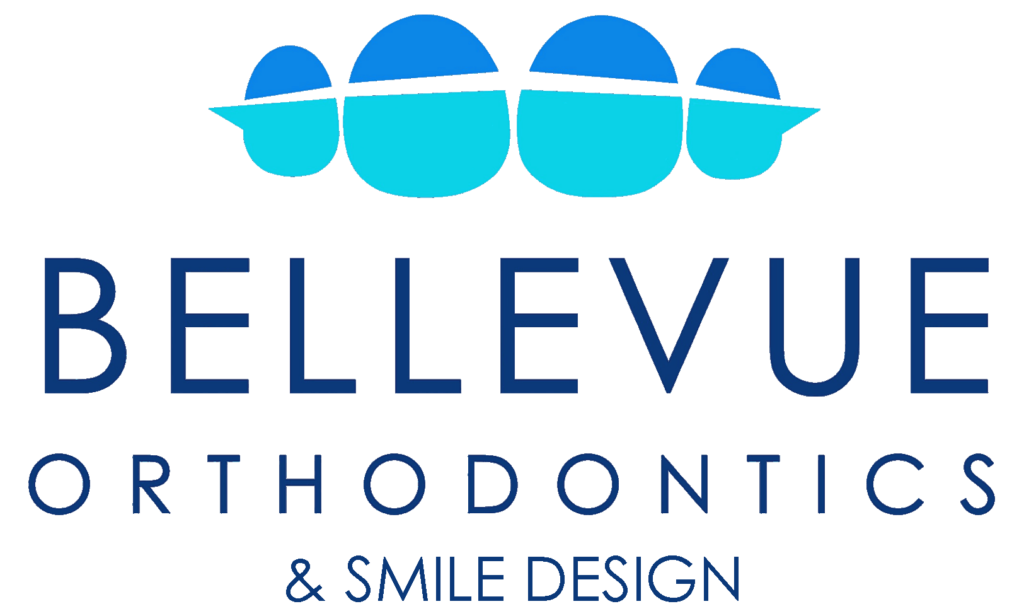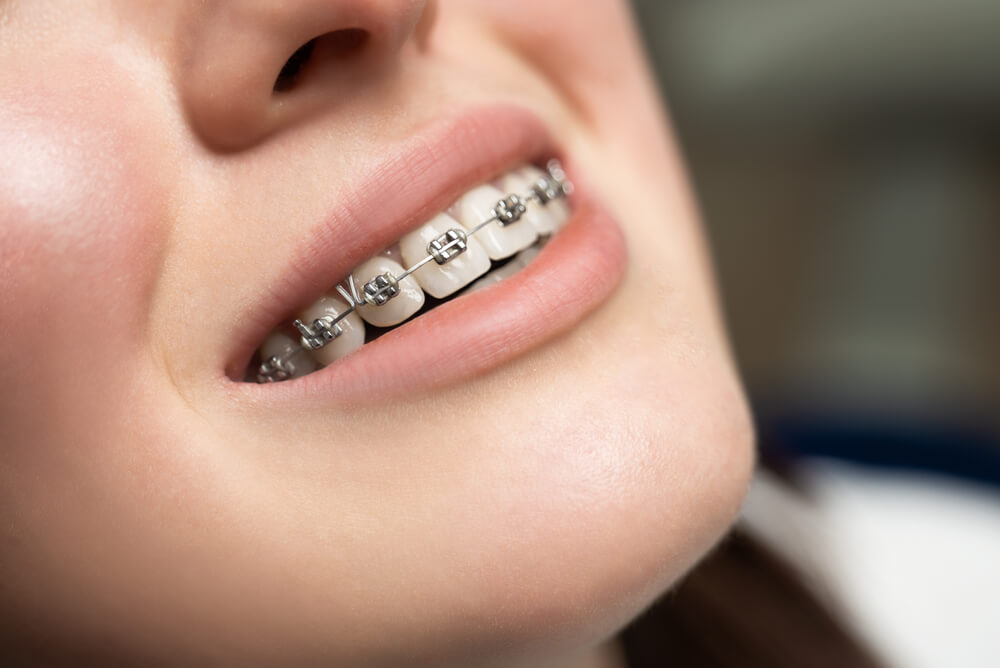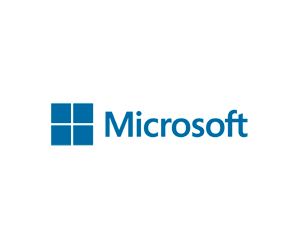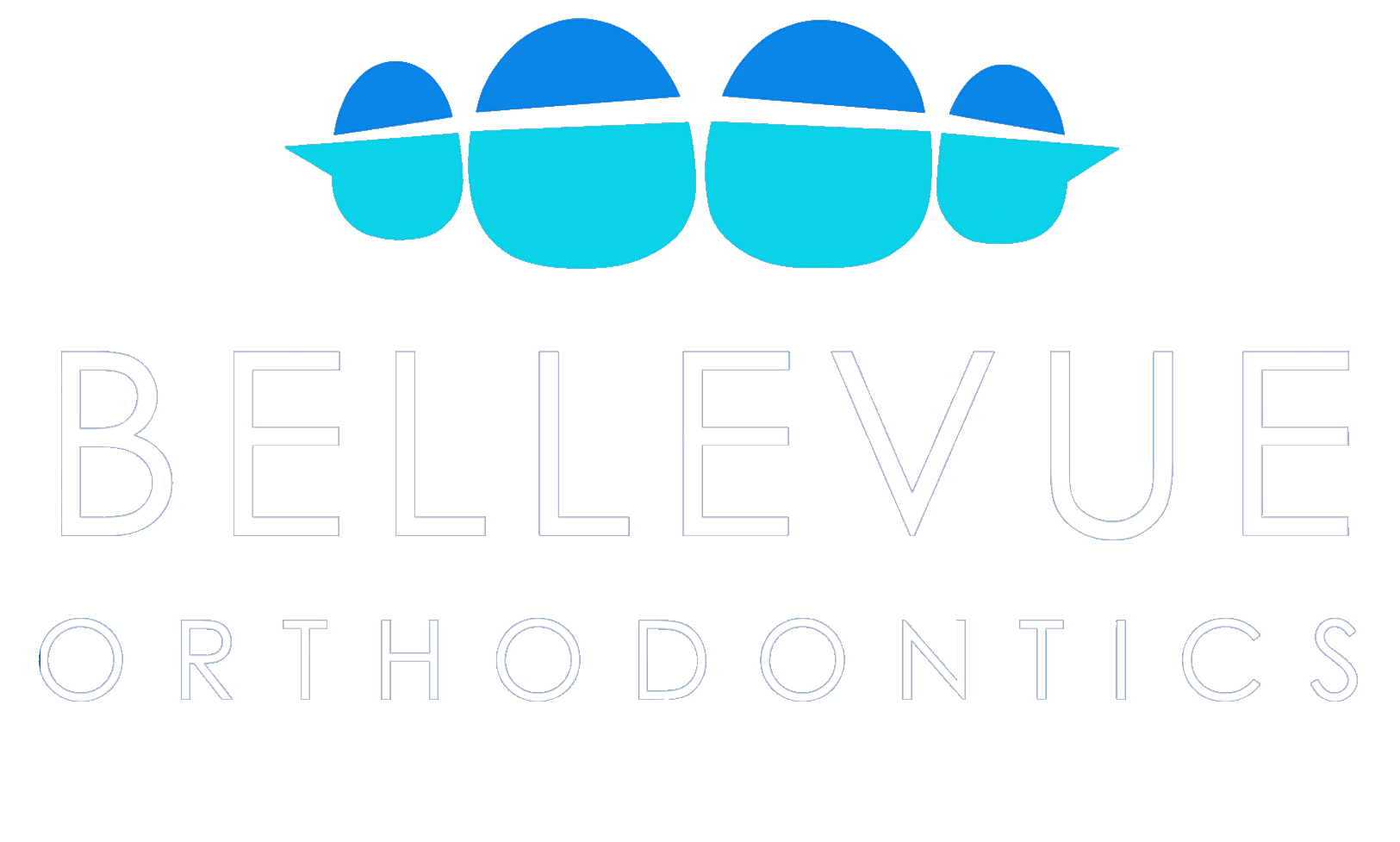There are 5 main types of braces available today:
- Metal braces
- Ceramic braces
- Self-ligating braces
- Lingual braces
- Clear aligners like Invisalign
Metal braces
Metal or traditional braces are the most common type of braces world-wide and have been around for over 100 years now. In the past, braces were very bulky and noticeable. Luckily, braces today are nothing like what they were 100 years ago. Advances in innovation and technology have made braces:
- Smaller
- Faster
- More Comfortable
- More Effective
Metal braces are most popular among children and adolescent patients. They work by applying the braces to the teeth and connecting them with a wire. The wire is tied to the braces using elastic ties, which come in an array colors to choose from. To move the teeth, the orthodontist makes adjustments to the wire at your appointments every 4-8 weeks.
Unlike clear aligners like Invisalign which are removable, some parents and patients love metal braces because they do not need to remind their child to wear them. However, metal braces require care and attention and good oral hygiene is a must throughout treatment.
Pros
- Efficient and versatile
- No speech changes
- Appointments every 4-8 weeks
- Fun if you want colors
- Less reliant on patient compliance than Invisalign
- No waiting period to get started
- Most affordable
Cons
- Difficult to brush and floss
- Most noticeable esthetically
- Not for patients with poor oral hygiene
Brands of Metal Braces
There are many brands of metal braces:
- Ormo Mini Diamond
- American MINI MASTER
- Dentsply GAC OmniArch
- Unitek Victory Series
- SPEED System
- Damon
- WildSmiles
Ceramic Braces
Ceramic braces are braces made of clear, tooth colored material. They work in the same way as metal braces, but are more discreet and less visible. Ceramic braces are most popular among patients who do not think Invisalign or lingual braces are right for them, but who still want to straighten their teeth in a discreet and affordable way. These patients tend to be esthetically-driven adolescents and adults.
Compared to metal braces, ceramic braces are less noticeable and present an affordable alternative to metal braces. You should know, however, that these braces are also slightly larger than metal braces and can stain depending diet and brushing habits. They are not for everybody, but we believe they remain a valuable tool in our orthodontic tool-bag.
Self-ligating Brace
Self-ligating braces work similarly to metal and ceramic braces and are available in metal or clear/ceramic material. They too rely on braces and a wire to move the teeth. The difference between self-ligating braces compared to metal or ceramic braces is that self-ligating braces use doors or clips to hold the wire in place, rather than elastic rubber ties.
We have found that self-ligating braces result in mildly shorter appointment times because of how easy they are to adjust. They are therefore a good choice for:
- Patients who are more sensitive to discomfort
- Patients who cannot sit still in the dental chair for very long
- Patients with developmental delays and orthodontic need.
Lingual Braces
Lingual braces behind the teeth are the most specialized and least common orthodontic system on the market. This is because they require a different set of orthodontic skills that few orthodontists take the time to hone. Lingual braces behind the teeth are not taught during orthodontic training, and it is therefore up to the orthodontist to learn to become proficient with them.
We believe that lingual braces behind the teeth should be presented as an option to all eligible patients because they provide advantages that no other type of braces offer. These include complete invisibility, full customization to your specific teeth, as well as better efficiency and versatility in select patients.
Lingual braces behind the teeth are especially well-suited for adults who do not want noticeable braces, but also have complex orthodontic needs. We have also seen an increase in the popularity of braces behind the teeth among esthetically conscious adolescents.
While lingual braces offer many advantages, there are some things you should know before taking the leap! Because lingual braces are behind the teeth, some patients experience slight changes to their speech (lisps are common) and irritation to their tongue. These symptoms usually present shortly after the braces are applied and usually go away several weeks later as your mouth becomes accustomed to the new appliances.
There are many type of lingual braces, including but not limited to:
- Incognito nanobraces by 3M
- Suresmile by Dentsply
- Harmony by American Orthodontics
- Alias by Ormco
- INBRACE
- Lingual Liberty
- BRIUS
Invisalign And Clear Aligners
Clear aligners have seen a surge in popularity in the last decade. They were popularized by Invisalign in the early 2000s, which slowly became the largest brand of aligners. In a way, they are what “Kleenex” is to facial tissues or “BandAid” to bandages.
It is clear why clear aligners and Invisalign are so popular right now:
- Clear and transparent
- Removable
- Allow for easier brushing and flossing
- Faster than braces for some limited treatments
- Require less appointments in some cases
- Shorter appointments are sometimes possible
Invisalign is great for patients who had braces when they were younger and just need a “touch up,” as well as for patients who have mild to moderate dental problems like misaligned teeth, large overbite, no jaw alignment problems, and who have gaps in their front teeth (open bite). But any clear aligner system including Invisalign has significant limitations compared to braces when addressing difficult problems or comprehensive treatments.
For more complex problems, lingual braces behind the teeth or a combination of Invisalign and lingual braces can offer a unique and esthetic treatment solution. We can provide you with more personalized information at your free initial examination.












